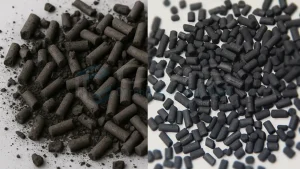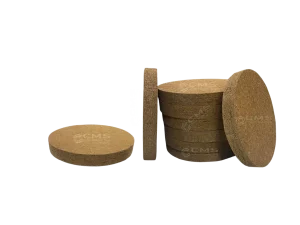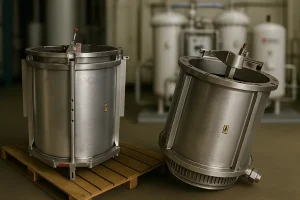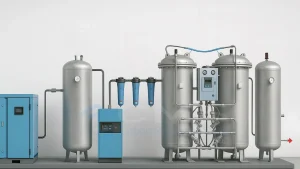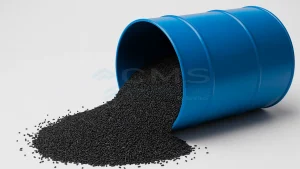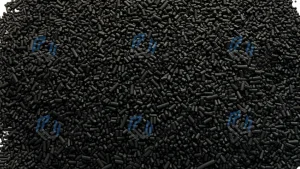How to Replace a CMS Bed After Oil or Water Contamination?
When a PSA nitrogen generator has run for an extended period, the carbon molecular sieve (CMS) inevitably reaches end of life adsorption capacity declines, nitrogen purity falls, and overall N₂ output drops. Many users also observe rising pressure drop and visible fines carryover (often called “powder spraying”). In these conditions, the practical remedy is to replace the CMS to restore design purity and flow.
A Carbon Molecular Sieve (CMS) bed in a PSA nitrogen generator becomes contaminated with oil or water, the system quickly loses efficiency and nitrogen purity drops. Contamination usually comes from failed air pretreatment, such as ineffective filters or dryers, and once the CMS damaged, it cannot restored. In this case, replacing the CMS bed is the only solution. To ensure safe operation, stable nitrogen quality, and service life, replacement process must follow strict steps from shutdown to reloading.
Make the System Safe
- Shut down and depressurize the generator.
- PSA vessels may create oxygen deficient or oxygen enriched conditions, always use good ventilation and O₂ monitoring.
- Before opening any piping or vessels, purge with clean, dry air and check oxygen levels.
Fix the Root Cause First
- This usually requires coalescing filters, a dryer, and (if using a lubricated compressor) an oil vapor removal filter.
- If oil or water found in the pre-filter, it means pretreatment has failed, correct this before re-bedding.
Remove the Contaminated CMS
- Open the adsorber safely and remove the top cover and screens.
- Vacuum out the CMS using an anti-static, ATEX-rated vacuum to reduce dust and ignition risk.
- Collect the spent CMS as contaminated waste and dispose of it according to regulations.
- Inspect and clean the screens, distributors, and gaskets; replace if damaged.
- If the original design uses a guard layer (e.g., activated alumina), replace it in the same arrangement.
Load the New CMS Properly
- Use the Snowstorm Filling Method to ensure even, dense packing and avoid channeling.
- After filling, install CFL compression pads (rubberized coconut-fiber mats) to hold CMS bed tight and prevent dusting or movement during operation.
Reassemble, Leak Test, and Restart
- Refit the screens/retainers and close the vessel securely.
- Perform a leak test with dry air or nitrogen.
- Start the system with clean, dry feed air.
- Record the baseline pressure drop (ΔP vs. flow) and check nitrogen purity to confirm the new CMS is performing as expected.
- Ensure the filters and dryer are working correctly and regularly drained.
How to Prevent CMS From Oil or Water Contamination?
- Maintain Proper Air Quality: PSA nitrogen generators must always run on dry, clean, and oil-free air, which ensures very low particles. A -40 °C pressure dew point, minimal oil vapor Supply air within the standard and effective way to protect CMS from contamination.
- Use the Right Pretreatment Equipment: A proper pretreatment system is essential for clean feed air. This usually includes coalescing filters to catch oil mist, dryers to remove moisture, and oil-vapor removal filter when using lubricated compressors. Together, these components stop oil and water before they can ever reach the CMS bed.
- Inspect and Service Filters Regularly: Even the best filters fail if they are not maintained. Replacing filter elements on time and draining water traps properly keeps the pretreatment system effective. Neglected filters can allow oil and water to slip through, leading to CMS contamination.
- Check for Early Signs of Contamination: Routine checks are key to early detection. If oil film is visible in pre-filter, it is clear sign that pretreatment has failed and must corrected immediately. Monitoring dew point and oil carryover gives additional assurance that the CMS is protected.
- Keep Standby Units Protected: When a nitrogen generator is out of service for a long time, the CMS must still be protected. Purging the vessels with dry nitrogen and sealing them tightly prevents moisture and oil vapors from entering during downtime, keeping the CMS safe until the system restart.
Conclusion
Replacing a contaminated CMS bed is not just about restoring purity, it’s about protecting the long term performance of your PSA nitrogen generator. Following safe procedures, using the Snowstorm Filling Method, and securing the bed with CFL mats ensures your system runs reliably for years.
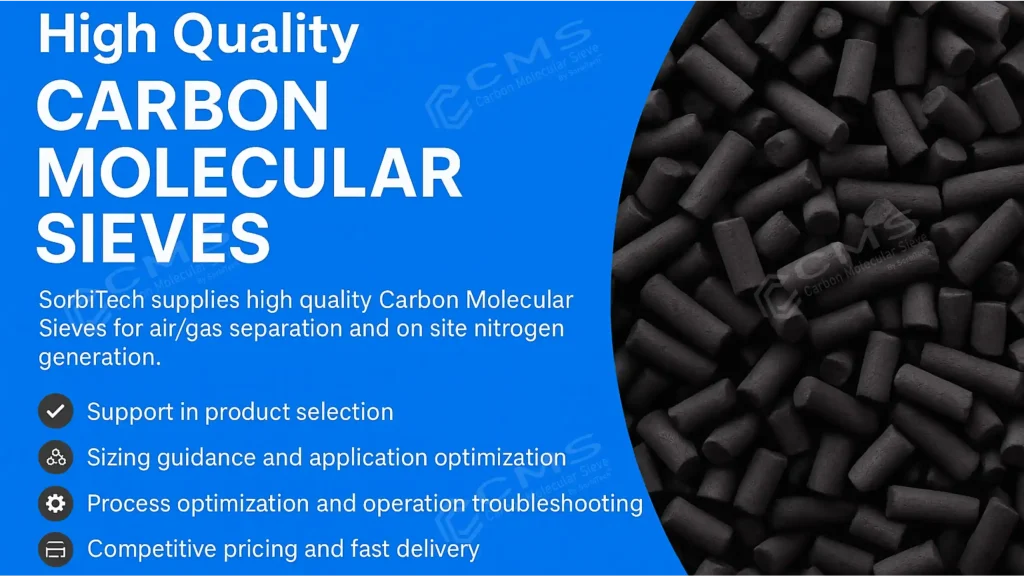
At SorbiTech™, we supply high quality Carbon Molecular Sieves designed for maximum durability, high nitrogen purity, and longer service life under demanding PSA operations. If you’re looking to re-bed your system or upgrade to a more reliable CMS supply, our team can guide you with both the right product and the right practices.
